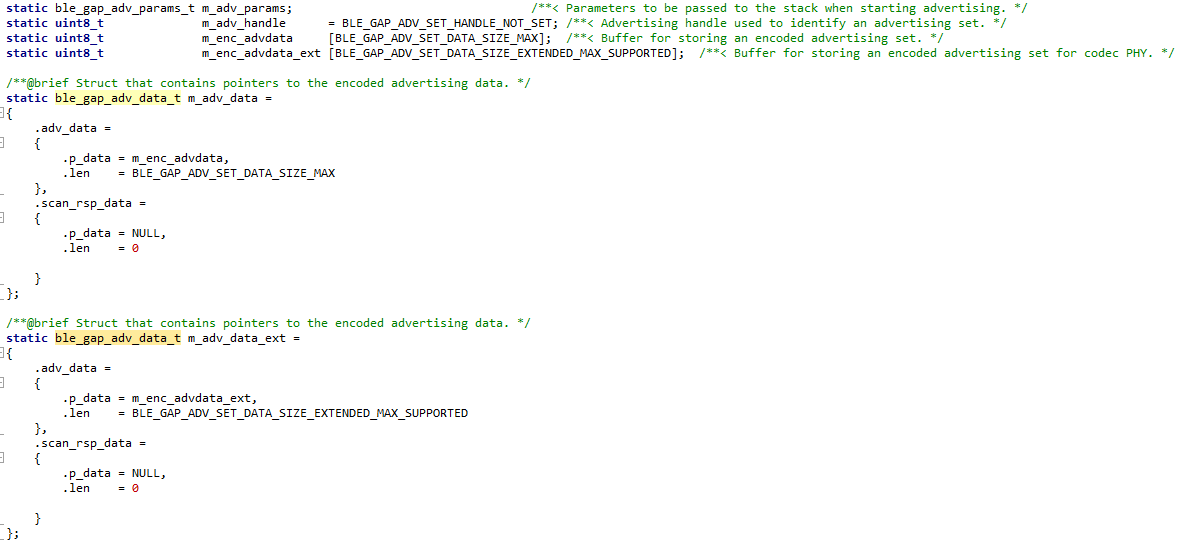Hi,
I was trying to configure adv data such us UUID, major, minor and other data using codec PHY in BLE. I am able to send it correctly using 1M PHY, buy I am having many troubles using Codec.
My project is this one: 0167.ble_app_beacon_.zip and using
SEGGER Embedded Studio for ARM
Release 7.32 Build 2023081802.53976
Windows x64.
With nRF5 SDK v17.1.0
First of all i have defined two compilation settings (needed for compiling, as i used defined variables on them in advertising_init):


I defined the variables in the first two profiles.
As it is shown in the Preprocessor options:

This project is an advertiser that sends BLE advertisements accord the compilation profile defined. And Tx power and PHY mode can be changed using switches 3 and 2 respectively.
I have the following NRF_ERROR_DATA_SIZE error using the 1adv_seg compilation environment, please use only this one (in which the tx power change works properly):

The error is in this line:
![]()
This worked for me before because I had commented those lines, but when I scanned the adv in Codec mode I realised than it did not contain any advertisement data to obtain and analyze, so I uncommented the lines and the error arose.
I also tried to create a new ble_gap_adv_data_t m_adv_data, defining the len of the p_data defined by other buffer for extended advertisers, as is shown in the image:

Therefore, my issue is inside the ble_advdata_encode for extended advertisements using Codec, and I do not know where is the problem, please if you would help me.
Thanks for the support!




